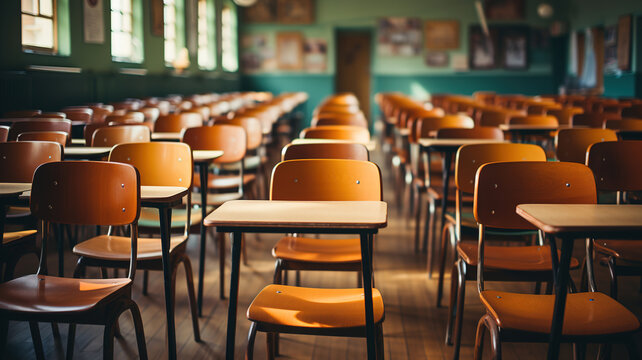Approved schools in Kenya, also known as rehabilitation schools, are crucial facilities established under the Children Act, 2022, Section 78. These institutions serve as safe spaces for the rehabilitation and reintegration of children who have committed offenses or require protection due to challenging circumstances.
This article explores the approved schools’ roles, the list of institutions, admission criteria, and the programs they offer to ensure the successful reformation and empowerment of their learners.
Table of Contents
- Introduction to Approved Schools
- Key Functions of Approved Schools in Kenya
- List of Approved Schools and Their Locations
- Programs and Training Offered in Rehabilitation Schools
- Admission Process for Approved Schools
- Impact of Approved Schools on Kenyan Society
1. Introduction to Approved Schools
Approved schools are designed to rehabilitate minors under the age of 18 who have run afoul of the law or need care and protection. These children are placed in these institutions instead of juvenile detention centers, providing them with an opportunity to reform in a nurturing and structured environment.
Offenses leading to placement in these schools include:
- Robbery with violence
- Sexual misconduct
- Theft and burglary
- Assault
- Substance abuse and trafficking
- Truancy and other delinquent behaviors
Rather than punishing offenders, these schools focus on reformation, equipping children with skills and knowledge to rebuild their lives.
2. Key Functions of Approved Schools in Kenya
Approved schools play a pivotal role in fostering positive change and creating pathways to a better future for young offenders.
- Rehabilitation and Behavioral Reform
- Children are guided to recognize and correct their behavior, promoting accountability and responsibility.
- Education Continuity
- Academic programs ensure learners progress in their studies without interruption.
- Skills Training
- Vocational courses equip learners with practical skills for self-reliance.
- Counseling and Support
- Professional counselors address emotional and psychological challenges, enabling holistic recovery.
- Preparation for Reintegration
- Upon completing their rehabilitation period, learners are prepared to re-enter their communities and schools.
3. List of Approved Schools and Their Locations
Kenya has nine government-approved rehabilitation schools strategically located to serve various regions.
Schools for Girls:
- Dagoretti Girls Rehabilitation School – Located in Nairobi.
- Kirigiti Girls Rehabilitation School – Based in Kiambu County.
Schools for Boys:
- Kabete Rehabilitation School – Nairobi County.
- Kakamega Rehabilitation School – Kakamega County.
- Kericho Boys Rehabilitation School – Kericho County.
- Kisumu Rehabilitation School – Kisumu County.
- Likoni Boys Rehabilitation School – Mombasa County.
- Othaya Boys Rehabilitation School – Nyeri County.
- Wamumu Boys Rehabilitation School – Kirinyaga County.
These institutions ensure geographical accessibility for children in need across the country.
4. Programs and Training Offered in Rehabilitation Schools
Academic Programs
Learners continue their formal education based on the Kenyan national curriculum, ensuring they remain on track academically.
Vocational Training
Practical skills development is a key focus area, with training in fields such as:
- Carpentry and joinery
- Tailoring and garment making
- Horticulture and agriculture
- Electrical installation
- Plumbing and masonry
Counseling Services
Specialized counselors provide therapy to help learners cope with their challenges and make positive behavioral changes.
Life Skills Training
Programs include:
- Personal development
- Communication and conflict resolution
- Decision-making and resilience building
Extracurricular Activities
- Sports and Games: To promote teamwork, discipline, and physical fitness.
- Scouting: To instill leadership skills and discipline.
- Arts and Crafts: Encourages creativity and self-expression.
5. Admission Process for Approved Schools
Children are admitted to approved schools under specific circumstances:
- Court Mandate
- Juvenile courts direct children to these schools based on their offenses.
- Protective Placement
- Children found in harmful environments or neglected homes are placed in these schools for care and protection.
- Serving Rehabilitation Sentences
- Offenders serve their rehabilitation period before being reintegrated into society.
Admission ensures that children receive the necessary support to reform and transition successfully.
6. Impact of Approved Schools on Kenyan Society
Approved schools contribute significantly to the well-being of Kenyan society by:
- Reducing Juvenile Crime
- By addressing the root causes of delinquency, these schools prevent repeat offenses.
- Empowering Vulnerable Youth
- Vocational and life skills training ensures children can build sustainable futures.
- Breaking the Cycle of Poverty and Crime
- Rehabilitation schools provide pathways for young offenders to escape negative environments.
- Fostering National Development
- Skilled and reformed youth contribute positively to the economy and community.
Challenges Facing Approved Schools
Despite their critical role, these institutions face several challenges:
- Inadequate Funding: Limited resources hinder the quality of education and training.
- Overcrowding: High demand for these schools leads to strained facilities.
- Social Stigma: Reintegration into society remains difficult due to lingering biases against former offenders.
Addressing these issues requires increased government support and public awareness of the importance of rehabilitation.





